A guide to TRM best practices for travel managers
Program design and review: Sculpting the travel risk management strategy.
By: Ray Rackham
March 18, 2024
This is the fourth in a series of five articles on Travel Risk Management (TRM) best practices. TRM in a post-COVID world has never been more crucial. As companies navigate the complexities of business travel in an era marked by uncertainties and evolving risks, understanding and implementing TRM best practices is essential. This blog series, based on a comprehensive study conducted with travel managers worldwide, sheds light on the most critical aspects of TRM. Our methodology involved analyzing survey data, industry standards like ISO 31030:2021, and insights from the Global Business Travel Association (GBTA), ensuring a robust and practical approach to understanding TRM in today’s workplace. Download the full report here.
At the heart of an effective Travel Risk Management (TRM) strategy lies not just the operational components but the strategic design and regular review of the program. This post delves into the significance of a well-structured and continuously evaluated TRM strategy—an aspect of TRM strategy design strongly underpinned by the 'TRM in a Post-COVID World' study.
Analysis of the comprehensive survey data highlights the paramount importance of a strategic approach to TRM. It aligns the TRM framework with organizational goals and adapts to the ever-evolving risk landscape.
Best practices in program design and review
The study identified three areas in which travel and mobility managers should focus to ensure world-class program design and review.
1. Regular program review
Consistent and thorough evaluation, as practiced by 63% of organizations, ensures that the TRM program not only remains relevant but thrives against emerging risks and challenges.
2. In-depth risk profile analysis
Conducting a detailed analysis of the organization's risk profile—a strategy followed by 56% of firms surveyed—is instrumental in customizing the TRM program to meet specific needs, vulnerabilities, and risk appetites.
3. Comprehensive implementation of KPIs
While currently, only 42% of organizations harness KPIs for TRM, establishing and monitoring key performance indicators are critical in measuring success, guiding program enhancements, and driving strategic TRM decisions.
The journey of designing and reviewing the TRM program is never-ending, demanding strategic foresight, adaptability, and an unwavering commitment to excellence. It necessitates that the organization's TRM framework remains robust, relevant, and resilient—a sentiment that resonates with the findings of the TRM study.
Travel well-informed with CIBTvisas
An experienced visa specialist can help you navigate the complexities of border crossing requirements. Contact CIBTvisas for a quote today.
CIBTvisas Monthly Update
Get the CIBTvisas Monthly Update for the most recent information on travel requirements and consular closings.
